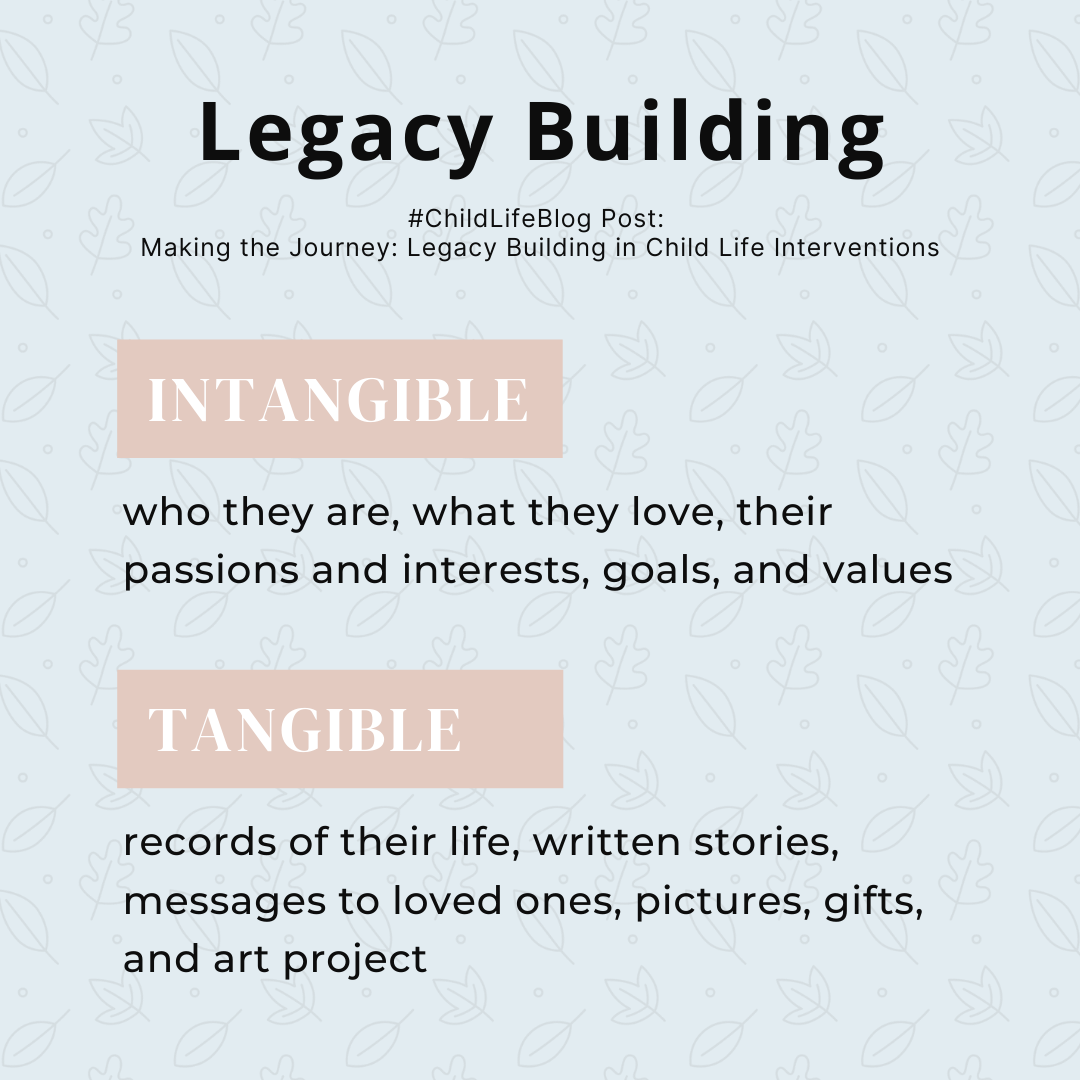Nicolle Bengtson, CCLS
Certified Child Life Specialist: Solid Tumors
Texas Children's Hospital Cancer Center
There are many definitions of the word legacy. In historical terms, the word legacy can be defined as something that is handed down from one period or time to another. In simple terms, it is knowing you left your mark on the world. Everyone has a legacy; you just have to decide what it is and how you want to share it.
As child life specialists, I think we have a unique skill set to provide children with the opportunity to create a piece of their legacy and make their mark of where they are currently at in life. I work with children who have cancer and I believe legacy building is an essential part of my practice. It is so important to assist children and their families with creating memories and helping them choose how they want to remember their cancer journey.
There is a misconception that legacy building can only occur when children are at end-of-life or have a poor prognosis. Legacy building interventions are focused on helping children and their families create lasting memories. This can be focused on an exact moment in time, looking back over the years and life that has been lived, or even experiencing something challenging or difficult. Legacy building interventions are not only tangible items like art projects but can also be the memory made from an enjoyable experience. I often think of legacy building in 2 forms, tangible and intangible.
- Intangible: who they are, what they love, their passions and interests, goals, and values
- Tangible: records of their life, written stories, messages to loved ones, pictures, gifts, and art project

Providing legacy building interventions is a part of my everyday work. When thinking of intangible projects, I often think of a patient I worked with who loved to watch Melissa McCarthy movies. Melissa McCarthy was always a point of conversation during her visits to the hospital. This became a part of her hospital legacy as we not only talked and laughed about the movies but also made detailed plans to reenact scenes from the movies. This intangible legacy project is something her family still talks about to this day. I also had another patient whose legacy was to simply make a mess. Making a mess helped her feel more comfortable to open up to others and allowed her to be herself while hospitalized. We were able to create amazing art pieces that served as tangible items while making a mess in the process that created those many intangible memories. Her overall goal at the end of treatment was to make the biggest mess the hospital had ever seen. I think this experience is one that her and her family will remember and talk about when she reflects on her childhood cancer journey.
Throughout my time as a child life specialist, I have implemented many legacy building interventions and have created programs within my practice to continue to motivate me. Some examples are creating photo projects with a group or individuals, creating a “menu of art” to spark ideas to create those tangible art projects, or even assisting patients with writing projects like story making or a funny interview about themselves or a loved one. A long-term legacy building program I created with a co-worker was a monthly video series called “World Changers.” We selected themes and interviewed patients based on the theme and compiled it in a video clip that was shared with the patients, families, and staff. There are countless options and ideas of projects but no matter what form of legacy building you choose it will make a lasting impact with the children and families you serve.